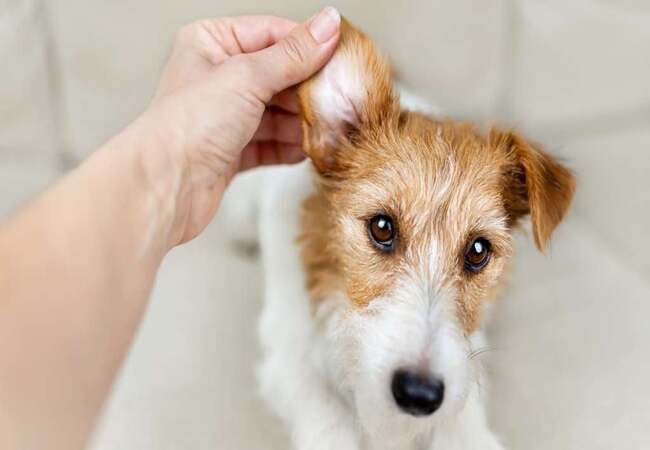Dog Lumps, Bumps & Cysts: A Vet’s 2025 Guide to Identification, Causes & Care 🐶🩺

In this article
Dog Lumps, Bumps & Cysts: A Vet’s 2025 Guide to Identification, Causes & Care 🐶🩺
By Dr. Duncan Houston BVSc
1. What Are These Lumps & Bumps? 🤔
Finding a lump, bump, or cyst on your dog can be concerning. These skin or subcutaneous masses range from harmless fatty deposits to cancerous tumors. Knowing what’s normal and when to act is critical for your dog’s health in 2025. 🐾
2. Common Benign Lumps ✅
- 🧈 Lipomas: Soft, movable fatty masses under the skin, especially in older or overweight dogs
- 🔴 Histiocytomas: Dome-shaped red bumps common in young dogs, usually self-resolving
- 🎯 Skin tags: Harmless flaps of skin that grow with age or friction
- 🦠 Warts: Viral papillomas, often in puppies or immunosuppressed dogs
- 🧬 Moles (Nevi): Flat or raised dark spots, often benign but can change over time
3. Cysts Explained 💧
Cysts are sac-like growths filled with fluid, oil, or debris. While often benign, they can rupture, get infected, or recur.
- 🧴 Sebaceous cysts: Blocked oil glands filled with sebum
- 🔁 Follicular cysts: Hair follicle obstructions—may reappear after drainage
- 💥 False cysts: Trauma-induced sacs without true linings—sometimes reabsorbed
4. Warning Signs of Malignant Tumors ⚠️
- 🌡️ Mast Cell Tumors: Can mimic benign lumps but spread internally—urgent biopsy needed
- 🩸 Melanomas: Often dark, irregular masses—especially in mouth or feet
- 🧨 Soft tissue sarcomas: Firm, slow-growing masses that invade surrounding tissue
- 🩺 Anal gland tumors: May cause straining, swelling, and systemic illness
- 💀 Hemangiosarcomas: Often internal but occasionally skin-based—bleed easily
5. When to See the Vet 🏥
- 🔎 Lump grows quickly or changes shape
- 🔥 Warm, red, or painful to touch
- 💉 Bleeds oozes, or crusts over
- 🚫 Interferes with movement or sitting
- 🐾 Causes limping or licking
Any new lump lasting over 2 weeks should be checked, even if it looks harmless. Early action is key! 🐶🧠
6. How Vets Diagnose Lumps 🧪
- 📌 Fine Needle Aspirate (FNA): Quick in-office test to examine cells under a microscope
- 🧬 Biopsy: Surgical sample sent to pathology lab
- 🧫 Histopathology: Most accurate—identifies cancer type, grade, and invasion
- 🩻 X-rays & ultrasound: Checks for spread to organs or lymph nodes
7. Treatment Options 💊
- 🩹 Monitor: Small, slow-growing, benign lumps may just be tracked
- 🔪 Surgical removal: Best for diagnosis or if the lump causes problems
- 💉 Antibiotics or anti-inflammatories: For infected cysts
- 🎯 Radiation/Chemotherapy: For confirmed malignant or aggressive tumors
8. Recovery & Aftercare 🛏️
Post-surgery care includes:
- 🧼 Keeping wounds clean and dry
- 🎽 Using an e-collar to prevent licking
- ⏱️ Follow-up exams or suture removal at 10–14 days
- 🩻 Ongoing imaging or blood tests for cancers
9. Prevention Tips in 2025 🛡️
- 🧼 Bathe regularly and keep skin clean
- 🍽️ Maintain a healthy weight
- 🩺 Yearly exams to monitor growth
- 📊 Keep a growth log with photos & sizes
- 💉 Spay/neuter to reduce hormone-related tumors
10. Ask A Vet Support & Tools 📲
- 📱 Ask A Vet App — Instant lump checks & guidance 24/7
- 🧰 Woopf & Purrz SkinCheck Kits™ — Gloves, calipers, tracking charts
- 🎓 Webinars: “Is This Lump Dangerous?” + biopsy walkthroughs
11. Final Takeaway 🎯
Lumps on dogs are common, but not always benign. Monitoring, early diagnosis, and guided treatment help you catch problems before they escalate. In 2025, proactive pet parents are their dog’s first line of defense. 🐕💪
Not sure about that bump? Visit AskAVet.com or open our app—expert support is a tap away. 📲






